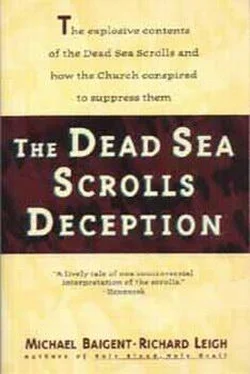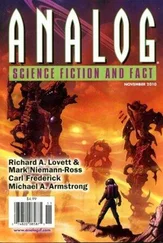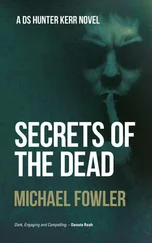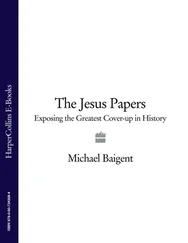Samuel later said he first learned of the Dead Sea Scrolls in April 1947. If chronology has hitherto been vague and contradictory, however, it now becomes even more so, varying from commentator to commentator. But some time between early June and early July Samuel requested Kando and George Isaiah to arrange a meeting with the three Bedouin who’d made the original discovery, to examine what they’d found.
When the Bedouin arrived in Jerusalem, they were carrying at least four scrolls and possibly as many as eight — the three they’d originally found themselves, plus one or more from whatever they or Kando and George Isaiah had subsequently plundered. Unfortunately, the Metropolitan had neglected to mention the Bedouin’s impending visit to the monks at the monastery of St Mark. When the Bedouin appeared with their dirty, crumbling and ragged parchments, themselves unshaven and insalubrious-looking, the monk at the gate turned them away. By the time Samuel learned of this, it was too late. The Bedouin, understandably resentful, wanted nothing further to do with Metropolitan Samuel. One of them even refused to have any further dealings with Kando, and sold his portion of the scrolls — a ‘third’ share which amounted to three scrolls — to the Muslim sheik of Bethlehem. Kando managed to purchase the shares of the remaining scrolls, and sold them in turn to the Metropolitan for a reported £24. This cache was believed at first to consist of five scrolls, but proved eventually to contain only four, one of them having broken in two. Of the four texts, one was a well-preserved copy of the book of Isaiah from the Old Testament, the parchment of which unrolled to a length of twenty-four feet. The other three, according to the nomenclature later adopted by scholars, included the ‘Genesis Apocryphon’, a commentary on the ‘Book of Habakkuk’ and the so-called ‘Community Rule’.
Shortly after the Bedouin’s abortive visit to Jerusalem — in late July according to some reports, in August according to others — Metropolitan Samuel sent a priest to return with George Isaiah to the cave at Qumran. Being engaged in illicit activities, the pair worked by night. They examined the site at length and found at least one additional jar and some fragments; they also conducted, apparently, some fairly extensive excavations. When the first official research party reached the location a year later, they discovered an entire section of the cliff-face had been removed, making a large entrance into the cave below the smaller hole originally explored by the Bedouin. What this enterprise may have yielded remains unknown. In researching this book, we interviewed certain people who insisted that George Isaiah, during the course of his nocturnal explorations, found a number of other scrolls, some of which have never been seen by scholars.
Having obtained at least some of the scrolls, Metropolitan Samuel undertook to establish their age. He first consulted a Syrian expert working at the Department of Antiquities. In this man’s opinion, the scrolls were of fairly recent date. The Metropolitan then consulted a Dutch scholar working with the Ecole Biblique et Archéologique Française de Jérusalem, an institution run by Dominican monks and financed, in part, by the French government. He was intrigued, but remained sceptical about the scrolls’ antiquity, describing subsequently how he returned to the Ecole Biblique and consulted ‘a prominent scholar’ there, who lectured him about the prevalent forgeries floating around amongst dodgy antique dealers. 4As a result, he abandoned his research on the matter, and the Ecole Biblique lost its opportunity to get involved at the beginning. Only the relatively untutored Metropolitan, at this point, seems to have had any inkling of the scrolls’ age, value and significance.
In September 1947, the Metropolitan took the scrolls in his possession to his superior, the Patriarch of the Syrian Jacobite Church in Horns, north of Damascus. What passed between them is not known, but on his return the Metropolitan again dispatched a party of men to excavate the cave at Qumran. Presumably he was acting on the Patriarch’s instructions. In any case, he obviously believed there was more to be discovered.
Metropolitan Samuel’s visit to Syria in September had coincided with the arrival there of Miles Copeland, who had joined the OSS during the Second World War, had remained with that organisation when it became the CIA and went on to become a long-serving operative and station chief. In a personal interview, Copeland told how, in the autumn of 1947, he had just been posted to Damascus as the CIA’s representative there. In the circumstances then prevailing, there was no need to operate under particularly deep cover, and his identity seems to have been pretty much an open secret. According to Copeland, a ‘sly Egyptian merchant’ came to see him one day and claimed to possess a great treasure. Reaching into a dirty sack, the man then pulled out a scroll, the edges of which were already disintegrating — fragments were flaking off into the street. When asked what it was, Copeland, of course, couldn’t say. If the merchant left it with him, however, he promised he would photograph it and get someone to study it.
In order to photograph it, Copeland and his colleagues took the scroll up on to the roof of the American Legation in Damascus and stretched it out. A strong wind was gusting at the time, Copeland remembered, and pieces of the scroll peeled away, wafted over the roof and into the streets of the city, to be lost for ever. According to Copeland, a substantial portion of the parchment vanished in this manner. Copeland’s wife, an archaeologist herself, said she could not help wincing every time she heard the story.
Using photographic equipment supplied by the American government, Copeland and his colleagues took, he reported, some thirty frames. This, he said, was not sufficient to cover the entire length of the scroll, which must, therefore, have been considerable. Subsequently, the photographs were taken to the American embassy in Beirut and shown to a prominent official there, a man versed in ancient languages. The official declared the text to be part of the Old Testament book of Daniel. Some of the writing was in Aramaic, he said, some in Hebrew. Unfortunately, however, there was no follow-up. Copeland returned to Damascus, but the ‘sly Egyptian merchant’ was never seen again and the photographs were left in a drawer. 5No one, to this day, knows what became of them, or of the scroll itself, although fragments of a Daniel scroll were subsequently found at Qumran, five years after the incident Copeland described.
If the scroll Copeland saw and photographed was indeed a text of Daniel, it has never become public.
Although it was precisely at this time that Metropolitan Samuel was in Syria with the scrolls he had purchased, it is unlikely that the scroll Copeland saw was one of these, since only three of the scrolls in his possession could be unrolled at all, and only one — the twenty-four-foot-long Hebrew text of Isaiah — would have taken more than thirty frames of film to photograph. If this is what Copeland saw, why should it have been identified as Daniel, not Isaiah, and why should the writing have been identified as both Hebrew and Aramaic? It is possible, of course, that the CIA official was mistaken. But when we repeated Copeland’s story to a prominent Israeli researcher, he was intrigued. ‘It might be very interesting,’ he said, in confidence. ‘It might be a scroll that hasn’t been seen yet.’ If we could obtain any further information, he said, ‘I’ll exchange with you… additional data concerning missing scrolls.’ 6Which implies, needless to say, that such data exist and have never been made public.
While Copeland’s photographs were being examined in Beirut, Metropolitan Samuel was persisting in his efforts to confirm the age of the scrolls in his possession. A Jewish doctor who visited his monastery put him in touch with scholars from Hebrew University. They in turn put him in touch with the head of Hebrew University’s Department of Archaeology, Professor Eleazar Sukenik. On 24 November, before Sukenik came to view the scrolls held by the Metropolitan, a secret meeting occurred between him and a figure subsequently identified only as an Armenian antique dealer. Neither had had time to obtain the requisite military passes. They were therefore obliged to meet at a checkpoint between the Jewish and the Arab zones of Jerusalem, and to talk across a barrier of barbed wire. Across this barrier, the Armenian showed Sukenik a fragment of a scroll on which Hebrew writing could be discerned. The Armenian then explained that an Arab antique dealer from Bethlehem had come to him the day before, bringing this and other fragments alleged to have been found by Bedouin. Sukenik was asked if they were genuine and if Hebrew University were prepared to purchase them. Sukenik requested a second meeting, which occurred three days later. This time he had a pass, and was able to look closely at a number of fragments. Convinced they were important, he resolved to go to Bethlehem to see more, dangerous though such an undertaking was at the time.
Читать дальше












